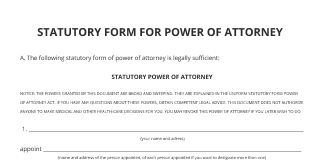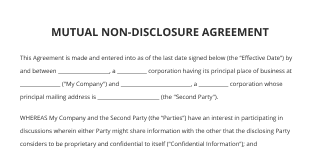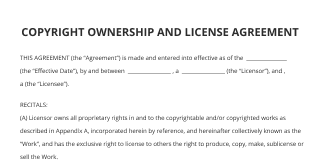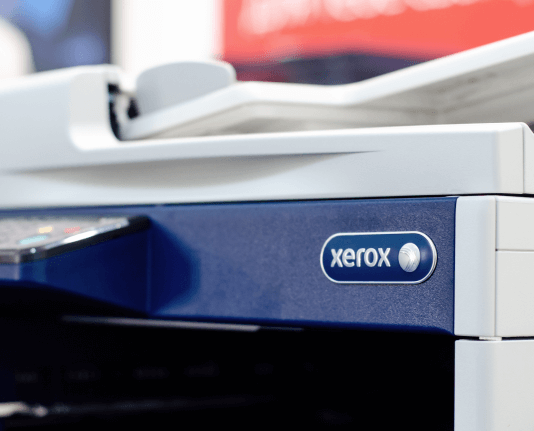Revolutionize your processes with modular workflow solutions
See how it works!Click here to sign a sample doc
airSlate SignNow solutions for better efficiency
Keep contracts protected
Enhance your document security and keep contracts safe from unauthorized access with dual-factor authentication options. Ask your recipients to prove their identity before opening a contract to modular workflow.
Stay mobile while eSigning
Install the airSlate SignNow app on your iOS or Android device and close deals from anywhere, 24/7. Work with forms and contracts even offline and modular workflow later when your internet connection is restored.
Integrate eSignatures into your business apps
Incorporate airSlate SignNow into your business applications to quickly modular workflow without switching between windows and tabs. Benefit from airSlate SignNow integrations to save time and effort while eSigning forms in just a few clicks.
Generate fillable forms with smart fields
Update any document with fillable fields, make them required or optional, or add conditions for them to appear. Make sure signers complete your form correctly by assigning roles to fields.
Close deals and get paid promptly
Collect documents from clients and partners in minutes instead of weeks. Ask your signers to modular workflow and include a charge request field to your sample to automatically collect payments during the contract signing.
Collect signatures
24x
faster
Reduce costs by
$30
per document
Save up to
40h
per employee / month
Our user reviews speak for themselves






be ready to get more
Why choose airSlate SignNow
-
Free 7-day trial. Choose the plan you need and try it risk-free.
-
Honest pricing for full-featured plans. airSlate SignNow offers subscription plans with no overages or hidden fees at renewal.
-
Enterprise-grade security. airSlate SignNow helps you comply with global security standards.

Your step-by-step guide — modular workflow
Steps to implement a modular workflow with airSlate SignNow
- Open your browser and navigate to the airSlate SignNow website.
- Register for a free trial or log into your existing account.
- Select and upload the document that requires a signature or needs to be sent for signing.
- If you plan to utilize the document again, convert it into a template for future use.
- Access your document and make necessary edits, such as adding fillable fields or updating information.
- Apply your signature on the document and insert signature fields for other recipients.
- Click on 'Continue' to configure the eSignature invitation and send it out.
airSlate SignNow stands out as a cost-effective solution, delivering a remarkable return on investment with a rich feature set. Its user-friendly interface is designed specifically for small to mid-sized businesses, providing an adaptable platform that scales with your needs.
Additionally, airSlate SignNow offers transparent pricing with no hidden fees, ensuring you know exactly what you're paying for. Benefit from dedicated 24/7 support available for all paid plans. Experience the ease of airSlate SignNow and streamline your document processes today!
How it works
Create your account
Set up your modular workflow
Send and sign documents
airSlate SignNow features that users love
be ready to get more
Get legally-binding signatures now!
FAQs
-
What are the four types of workflow?
The four major types of workflow management are sequential, state-machine, rules-driven and parallel. Sequential workflows must be completed in order; one step cannot begin until the previous step is completed. -
What are the different types of workflows?
Different types of workflows. Introduce the various types of workflow process, including manual, automated, sequential, parallel, and state-based workflows. -
What are the different types of workflow design?
Process workflow. A process workflow happens when the set of tasks is predictable and repetitive. ... Case workflow. In a case workflow, you must know the exact path required to complete the item. ... Project workflow. ... Sequential workflows. ... Parallel workflows. ... State machine workflows. ... Rules-driven workflow. ... Sales order processing. -
What are the workflow step types?
The types of steps that can make up a workflow include base system steps, user steps, and automated steps. A performer is a role or user who performs the action supported by the step. You design the workflow so that users can check out an entry and interact with the entry, then check the entry back in. -
What are the 3 basic components of workflow?
Work or tasks Of the three basic components of a workflow (trigger, work, and result) work is the most complex. That's only because the work may require several steps, inputs, and/or actors. -
What are the four types of workflow?
The four major types of workflow management are sequential, state-machine, rules-driven and parallel. Sequential workflows must be completed in order; one step cannot begin until the previous step is completed. -
What are the three basic components of a workflow?
There are three basic components within every workflow: Input is also called start or trigger. It's the information, materials and resources required to complete each step within a task. Transformation is also referred to as work. ... Output is also called result or outcome. -
What are the 3 basic components of a process?
In summary, the main components of a process are the process design or diagram, the tools for execution, the people to handle the tools, and the inputs to obtain the aforementioned components. -
What is modular workflow?
The main deliverable is a mathematical model for defining and analyzing a modular workflow to enable the creation of flexible workflow processes. The modularization model represents tasks relationships that maximizes cohesion between tasks, minimizes coupling between modules, while minimizing workflow time. -
What are 3 basic workflow management practices?
Workflow management involves key components that ensure tasks are completed efficiently and accurately. So, what are the 3 basic components of workflow management? They are inputs, processes, and outputs. Understanding these workflow components is essential for creating a streamlined and effective workflow. -
What are the 5 steps of workflow?
A workflow typically consists of five crucial steps: initiation, planning, execution, monitoring, and completion. Understanding these steps is fundamental to optimizing business processes and ensuring smooth operations. -
What are the 3 basic components of workflow?
Work or tasks Of the three basic components of a workflow (trigger, work, and result) work is the most complex. That's only because the work may require several steps, inputs, and/or actors. -
What are the 3 basic components of workflow?
Work or tasks Of the three basic components of a workflow (trigger, work, and result) work is the most complex. That's only because the work may require several steps, inputs, and/or actors. -
What 3 steps are included in a basic project workflow?
Step-by-step project management workflow guide Step 1: Create a list of jobs to be done. ... Step 2: Identify what tools are needed to execute tasks. ... Step 3: Delegate tasks and establish roles. ... Step 4: Test and improve workflow over time.
What active users are saying — modular workflow
Related searches to Revolutionize your processes with modular workflow solutions
Databricks workflow for each
Databricks pipeline vs workflow
Azure Databricks Workflows
Which of the following is a benefit of using Databricks Workflows for orchestration purposes
Frequently asked questions
What is a modular workflow in airSlate SignNow?
A modular workflow in airSlate SignNow allows businesses to create customizable and flexible processes for document management and e-signatures. This approach enables you to break down complex workflows into manageable modules, making it easier to adapt to specific needs and streamline operations.
How can modular workflows improve my business processes?
Modular workflows enhance efficiency by allowing teams to design tailored solutions that align with their unique requirements. By utilizing a modular approach, businesses can quickly adjust workflows as needed, thereby reducing the time and resources spent on document handling and approval processes.
Are there any additional costs for using modular workflows?
airSlate SignNow offers competitive pricing that includes access to modular workflows as part of its core features. This cost-effective solution ensures that you receive robust functionalities without unexpected fees, allowing your business to efficiently manage workflows without breaking the budget.
What features come with airSlate SignNow's modular workflow solution?
airSlate SignNow's modular workflow solution includes features such as automated document routing, e-signature capabilities, and integration with other applications. These tools empower users to create efficient workflows that can be easily adjusted to fit dynamic business needs.
Can I integrate modular workflows with other tools?
Yes, airSlate SignNow supports integrations with numerous third-party applications, allowing you to connect your modular workflows seamlessly. This capability enhances your organization's ability to synchronize data and streamline processes across different tools, promoting overall productivity.
How does using a modular workflow benefit remote teams?
For remote teams, a modular workflow in airSlate SignNow ensures that document management and e-signing processes remain accessible and efficient, regardless of location. This flexibility helps maintain productivity and collaboration in virtual environments, allowing teams to manage their tasks effectively.
Is training available for implementing modular workflows?
Yes, airSlate SignNow provides comprehensive training resources to help users implement and optimize modular workflows. This support ensures that your team understands how to leverage the full potential of the platform, making the transition smooth and efficient.
Can I customize my modular workflow setup?
Absolutely! airSlate SignNow allows extensive customization of your modular workflows to meet specific business requirements. You can easily modify each module, ensuring that your workflow is tailored to your unique processes and goals.





























